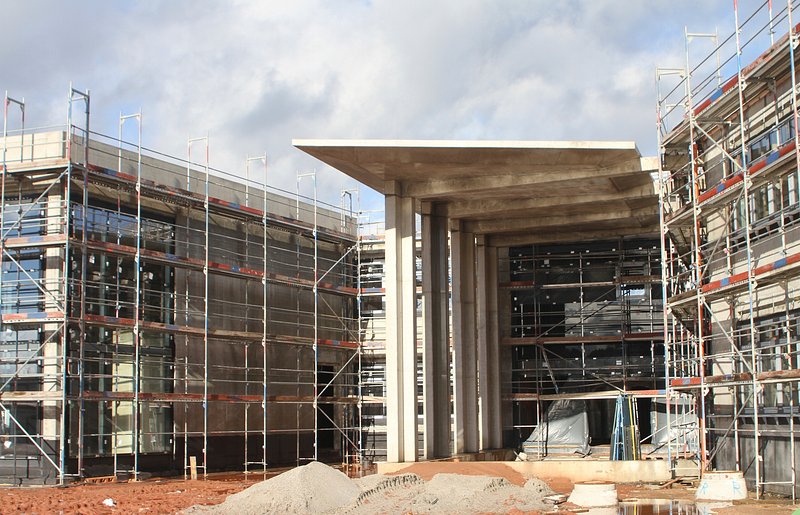Have a story idea
Have a story idea? Send it to us here.

Source : Rawpixel
February 27, 2025
Author : Alex Bustlos
California’s $10 billion school construction bond, approved by voters in November, is set to provide critical funding to school districts across the state.
However, securing a share of these funds may prove challenging, especially for smaller districts unfamiliar with the state’s complex application process.
The bond, known as Proposition 2, was approved with 59% of the vote, signaling strong public support for school infrastructure improvements. The funds will be allocated to both K-12 schools and community colleges, helping to modernize outdated facilities, build new classrooms, and improve school safety. However, with over 200 school districts passing local bonds in the same election, competition for state matching funds will be fierce.
Julie Boesch, an administrator for small school district support in Kern County, understands the difficulties many districts will face. “Putting out requests for qualifications and for proposals to hire consultants, architects, construction management, and then determining what kind of funding you can get- there are just so many things that have to happen,” Boesch explained. “There were times when I, as superintendent, was spending 90% of my time just on facilities.”
Of the $10 billion in Proposition 2 funding, $8.5 billion is allocated to K-12 schools, while $1.5 billion is earmarked for community colleges.
Within the K-12 portion, $4 billion will go toward modernization, $3.3 billion for new construction, and $600 million each for career and technical education facilities and charter schools. Additionally, $115 million is designated to remove lead from school drinking water.
However, a significant portion of these funds- approximately $4.8 billion- will be used to clear a backlog of projects previously approved under Proposition 51, the last state school bond passed in 2016. These projects, which were submitted for preliminary approval before Proposition 2’s passage, will receive priority, leaving only $3.7 billion immediately available for new projects. This has raised concerns among school officials about the extent to which Proposition 2 will fund new initiatives.
“There is so much more demand than there is funding,” said Sara Hinkley, program manager at UC Berkeley’s Center for Cities + Schools. “It’s safe to say that there’s always a long pipeline of projects awaiting allocations.”
The state has established a first-come, first-served system for allocating funds, which often benefits larger districts with dedicated facilities staff. This system places smaller districts, particularly those with fewer financial resources, at a disadvantage. To help address this, Proposition 2 sets aside 10% of modernization and new construction funds for districts with fewer than 2,500 students and allows these districts to use up to 5% of project funds to hire professionals to assist with applications.
To qualify for funding, school districts must submit detailed five-year master plans that outline their infrastructure needs, including classroom inventories and auxiliary facility conditions. While districts can submit funding applications before completing these plans, they must finalize them before receiving any money. The process for state approval is expected to take at least six months to a year, with additional delays due to regulatory changes and project prioritization.
A key feature of Proposition 2 is a slight shift toward needs-based funding. The state will provide up to 5?ditional matching funds to high-poverty, low-property-wealth districts. However, critics argue that this adjustment is insufficient to address existing inequalities in school infrastructure funding. “The total funding for the project would, in the eyes of the state, remain the same; it’s just more would be on the state’s dime, less on the school district’s dime,” said Rebekah Kalleen, a legislative advocate with the Coalition for Adequate School Housing (CASH).
Despite these challenges, experts urge school districts to begin applying for funds as soon as possible. “Districts are already planning and looking at their projects and submitting without yet knowing what the regulations will look like because there’s so much pent-up demand for state support,” Kalleen said.
Districts will need to go through multiple agencies, including the Division of the State Architect and the Department of Education, before securing funding. Experts recommend that schools engage with consultants and seek pre-approval meetings to streamline the process.
With a backlog of projects and a competitive application process, many schools may face years of waiting before receiving funds. “At an absolute minimum, in a perfect world, it really would be two years,” Boesch noted. “But more likely three or four.”
Ultimately, while Proposition 2 represents a significant investment in California’s schools, the demand for funding far exceeds supply, and many districts will continue to struggle with aging infrastructure and limited resources.
Category : State Government Schools
